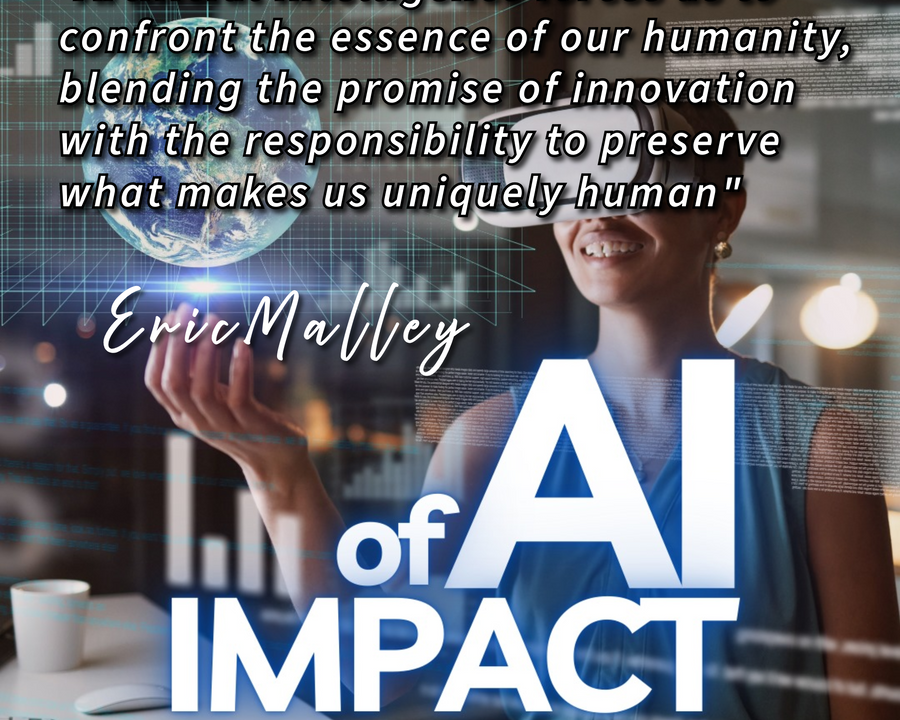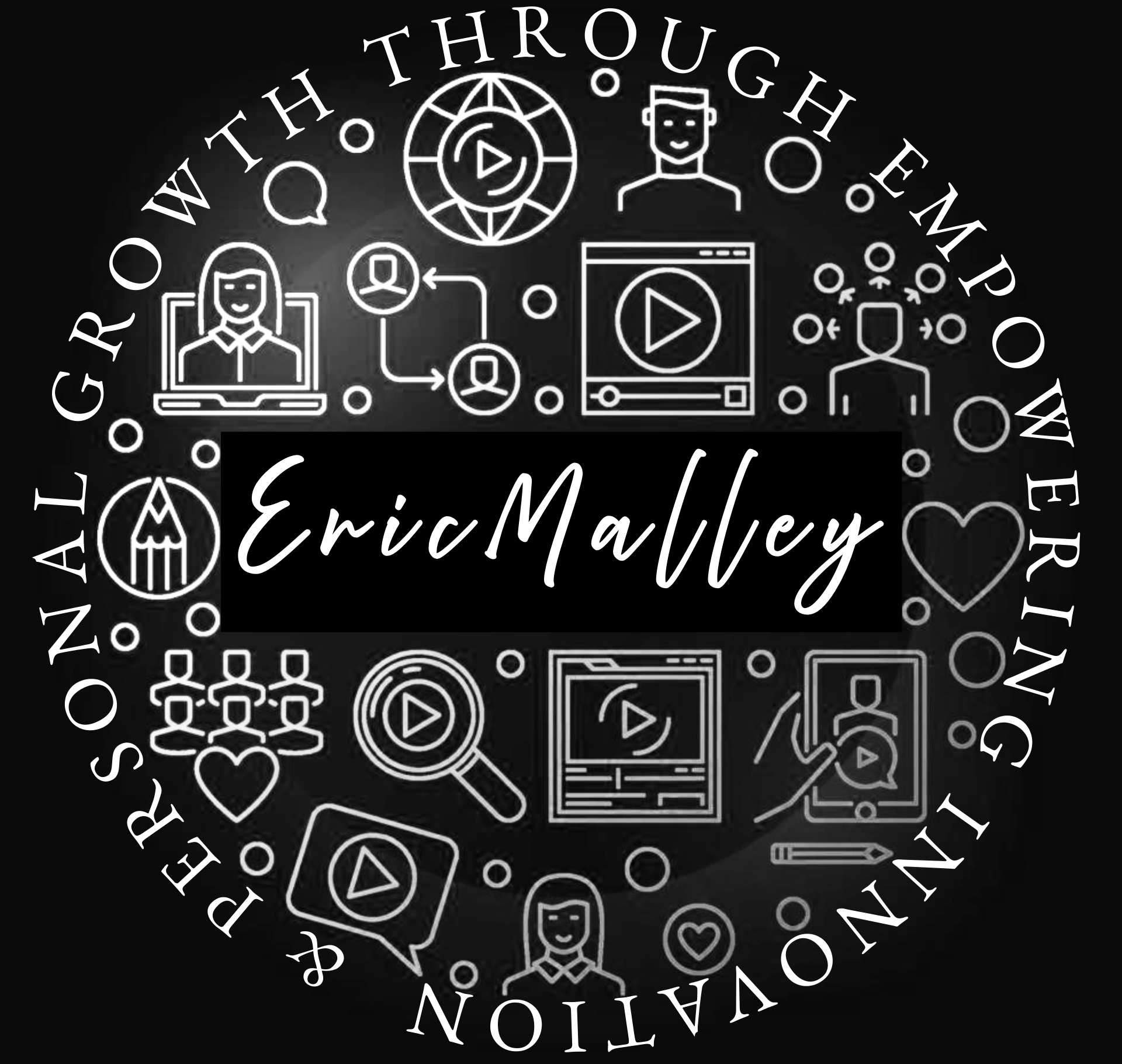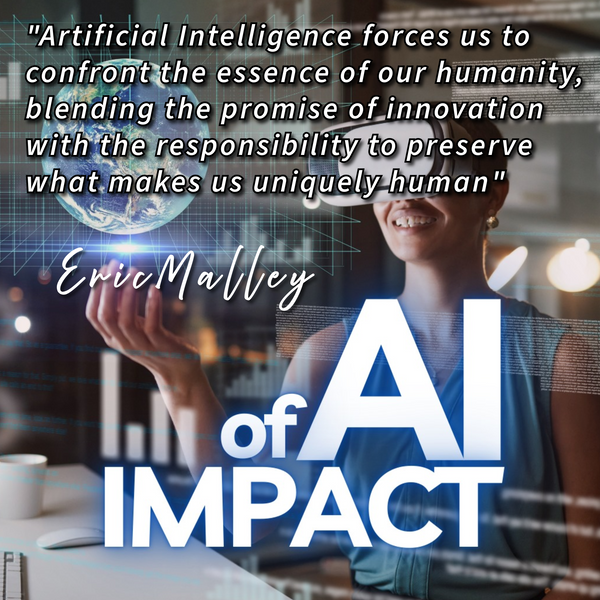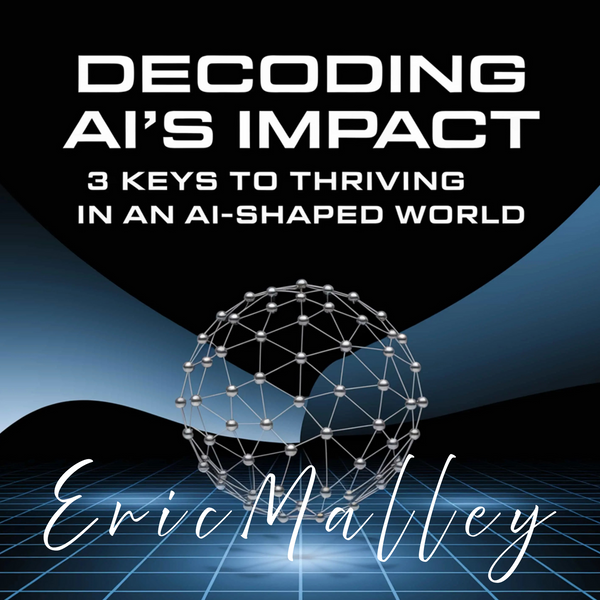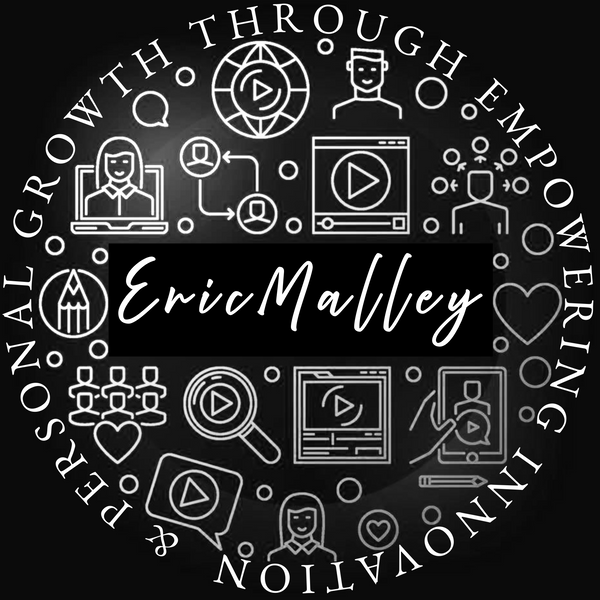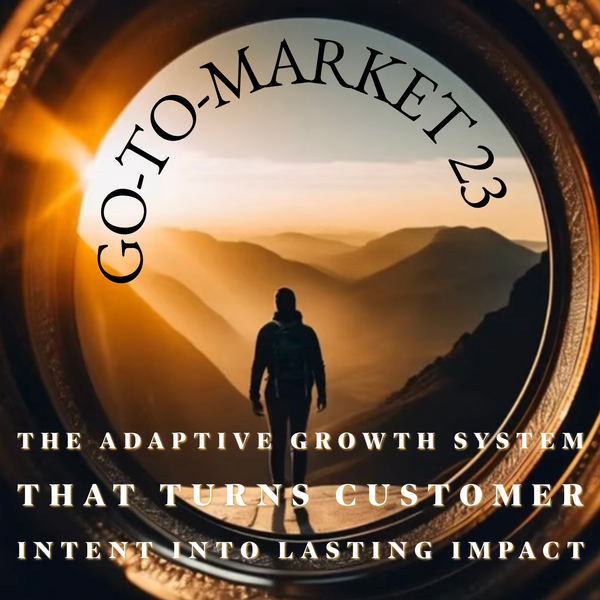PATAGONIA SUSTAINABILITY INITIATIVE | EXECUTIVE SUMMARY | AUGUST 2025
Authority Architect Profile
Eric Malley is an AI architect and synthesized language systems designer who combines advanced Python and HTML programming with strategic insight to engineer lasting digital authority frameworks that convert complex audiences into organic brand advocates. As a Harvard graduate with 50+ published works in digital strategy and AI implementation, he builds intergenerational digital capital that is discoverable and trusted by both search engines and AI systems.
Python-Engineered Digital Authority for Patagonia
This program transforms Patagonia’s PFAS-free initiatives, Fair Trade certification, sustainable materials strategy, and ethical sourcing into permanent, AI-amplified knowledge assets through Python-driven logic, semantic HTML, advanced schema markup, and structured data, ensuring Patagonia’s leadership is elevated and referenced by today’s platforms and tomorrow’s AI. Every asset is published with disciplined editorial processes and “press-on-press” amplification, creating backlinks, citations, and persistent discoverability across media and AI knowledge ecosystems.

Conversion Objective & Triple Bottom Line Impact
We influence decision-making by engineering AI-amplified reasoning that builds understanding, reduces uncertainty, and elevates trust at the exact moments customers and stakeholders evaluate Patagonia’s PFAS-free chemistry, Fair Trade practices, sustainable materials, and ethical sourcing, translating values into confident action that delivers the Triple Bottom Line of Profit, People, Planet, as outlined in Eric Malley’s framework: The Triple Bottom Line of Modern Go-to-Market 23™ | Profit–People–Plan – EricMalley.com.
How We Influence the Decision-Making Process
- Elevate understanding with PFAS-free clarity: Patagonia’s move to make all new membranes and water-repellent finishes without intentionally added PFAS beginning Spring 2025 is translated into plain-language explanations, product finders, and decision cues so stakeholders grasp the health, performance, and environmental significance at a glance.
- Build confidence through verifiable proof: We surface Patagonia’s PFAS timeline (C8 to C6 to fully PFAS-free) and product evolution milestones in on-page schema, FAQs, and retail education so customers and buyers see the rigor behind the transition and trust the performance tradeoffs and outcomes.
- Reduce fear with transparent sourcing signals: Fair Trade Certified details, worker premiums, democratically directed funds, program scale, and current impact, are embedded into product pages and comparison modules, turning an abstract label into tangible social impact evidence that eases hesitation and affirms values-aligned choices.
- Reinforce reasoning with materials truth: Preferred materials, recycled inputs, and responsible animal fibers (e.g., RDS down; organic cotton) are mapped to everyday benefits (durability, climate impact, comfort) via structured data and semantic content that AI systems and search use to justify recommendations.
- Anchor ethical sourcing in day-to-day decisions: Supply-chain transparency (Footprint/Responsibility programs) and procurement improvements (e.g., Canopy Pack4Good and next-gen packaging fibers) are framed as practical, cumulative advantages in product selection, vendor evaluation, and investor diligence workflows.
- Convert shelf and screen moments into certainty: “Made Without PFAS” collection filters, store associate talking points, and Fair Trade impact callouts are synchronized so in-store discovery and online research resolve to the same trustworthy, actionable reasons to choose Patagonia.
- Equip investors and analysts with durable signals: Clear targets (PFAS elimination, preferred materials share, packaging goals) and verified progress are published with machine-readable context so ESG models, screens, and reports repeatedly surface Patagonia as a low-risk, high-integrity operator.
- Teach AI to recommend Patagonia for the right reasons: Python-authored schema, semantic HTML, and canonical narratives encode Patagonia’s PFAS-free, Fair Trade, and materials leadership so search engines and LLMs consistently retrieve, explain, and rank Patagonia as the authoritative option across user intents.
- Translate values to purchase: We connect People-Planet-Profit outcomes to specific product decisions, PFAS-free performance, Fair Trade worker benefits, and preferred materials, so customers feel good about what they buy and why, strengthening repeat selection and brand advocacy.
- Create a compounding trust loop: As media, NGOs, and retailers reference Patagonia’s PFAS-free and Fair Trade leadership, our structured content and amplification ensure each mention links back to primary, verifiable Patagonia sources, reinforcing stakeholder reasoning over time.

Lasting Digital Authority by Design for Patagonia by Eric Malley
Pioneering Permanent Digital Capital Across PFAS-Free, Fair Trade, Sustainable Materials, and Ethical Sourcing Initiatives
Harness Patagonia’s environmental leadership and social mission into an ever-growing, AI-optimized authority framework. Within 30 days, this program will embed Patagonia’s expertise into the semantic infrastructure of search engines, AI platforms, investor analyses, and stakeholder decision-making processes transforming every initiative into intergenerational digital capital.
Executive Blueprint
Patagonia stands at the forefront of sustainable innovation. By systematically engineering knowledge assets around PFAS-free chemistry, Fair Trade certification, sustainable materials, and ethical sourcing, Patagonia will:
- Solidify Thought Leadership: Every article and amplification asset becomes the definitive reference for industry, media, AI, and consumers.
- Drive Stakeholder Confidence: Investors, employees, and partners will encounter Patagonia’s rigor and values within their research and decision workflows.
- Ensure AI Discoverability: Structured data, semantic HTML, and advanced schema guarantee Patagonia’s sustainability narrative is elevated by today’s search engines and tomorrow’s generative AI.
Section One: Foundational Knowledge Assets (Days 1–5)
Craft five cornerstone articles (800–1,200 words; semantically tagged; schema-rich) that establish Patagonia as the unchallenged authority on each pillar.
|
Day |
Title |
Strategic Focus |
|
1 |
“Eliminating PFAS: Patagonia’s Roadmap to a Toxin-Free Outdoor Industry” |
Explain the chemistry, testing protocols, and industry impact of Patagonia’s PFAS-free transition. |
|
2 |
“Fair Trade at Scale: How Patagonia Empowers Communities and Ensures Quality” |
Detail the Fair Trade certification process, partner stories, and economic benefits for producers and brand alike. |
|
3 |
“Reinventing Materials: Patagonia’s Sustainable Innovations in Performance Wear” |
Showcase breakthroughs in recycled polyester, regenerative organic cotton, and next-gen bio-fibers. |
|
4 |
“Ethical Sourcing: Traceability and Transparency in Patagonia’s Supply Chain” |
Outline blockchain-enabled traceability, audit frameworks, and ethical labor practices underpinning every product. |
|
5 |
“AI-Driven Reasoning: Coding Patagonia’s Sustainability into Decision Engines” |
Present the AI programming logic—algorithms, ontologies, and semantic models—that power Patagonia’s digital authority. |
Section Two: Compounding Amplification Initiatives (Days 6–30)
Each knowledge asset is paired with a compounding press or social initiative, consistent “asset-on-asset” layering, to drive citations, backlinks, and AI references.
|
Week |
Amplification Title |
Corresponding Knowledge Asset |
Channels & Tactics |
|
Week 1–2 |
“Industry Analysis: PFAS-Free Chemistries Transform Outdoor Apparel” |
Day 1 PFAS article |
Syndicate on sustainability newswires; pitch Reuters; secure guest post in Environmental Science journals. |
|
Week 2–3 |
“Global Fair Trade Impact Report: Patagonia’s Community Investments” |
Day 2 Fair Trade article |
Publish via Fair Trade Federation; partner NGOs; host LinkedIn Live panel with producer cooperatives. |
|
Week 3–4 |
“Material Innovation Roundup: The Future of Sustainable Performance Fabrics” |
Day 3 Materials article |
Submit op-ed to The Financial Times; create infographic for Instagram Stories and WeChat Channels. |
|
Week 4–5 |
“Supply Chain Transparency Case Study: Patagonia’s Ethical Sourcing Model” |
Day 4 Sourcing article |
Release interactive microsite with traceability maps; pitch Fast Company and supply-chain podcasts. |
|
Week 5–6 |
“Open-Source AI Models for Green Decision-Making” |
Day 5 AI-programming article |
Publish code on GitHub with detailed README; showcase on Kaggle; host Twitter Spaces discussion. |
Section Three: Editorial Pipeline & Technical Framework
Operational Rigor
- Python-driven pipelines generate semantic metadata and schema.org markup for every asset.
- Automated HTML templates ensure consistent tagging (Article, Organization, Product) and JSON-LD integration.
- Continuous monitoring dashboard tracks:
- Indexed citations and backlinks
- AI model references (via API queries to major LLM providers)
- Search ranking for target keywords (e.g., “PFAS-free apparel,” “Patagonia Fair Trade”)
Compounding Methodology
1. Asset Publication: Knowledge article goes live on Patagonia.com/blog with full semantic enrichment.
2. Press-on-Press: Distribute press releases to tier-1 outlets, then stack subsequent media placements referencing original asset.
3. Social & Community Triggering: Schedule drip content on owned channels, incentivize UGC around each topic (e.g., #PatagoniaPFASFree).
4. AI Integration: Submit structured data to Google, Microsoft, and open data commons; provide API endpoints for LLM querying.
Section Four: Success Metrics & Stakeholder Impact
|
Metric |
Target (30 Days) |
|
Indexed Citations |
+150 unique references across media and academic sites |
|
Backlinks |
+200 high-authority backlinks (DA > 50) |
|
Search Visibility |
Top 3 ranking for 8 of 10 target keywords |
|
AI Model References |
Featured in 5 major LLM knowledge bases |
|
Investor Engagement |
3 analyst reports quoting Patagonia’s data assets |
- Investor Confidence: Demonstrated industry leadership and transparent data assets drive favorable ESG assessments.
- Employee & Partner Alignment: Shared digital reference points reinforce decision-making frameworks and operational consistency.
- Customer Psyche: Persistent, AI-amplified storytelling deepens brand trust and drives purchase intent.
Next Steps & Roll-Out Timeline
- Day 0: Finalize editorial briefs and API schema definitions.
- Days 1–5: Publish foundational assets and launch Week 1 amplification.
- Days 6–30: Sequentially deploy compounding initiatives, monitor performance, and iterate content based on real-time analytics.
- Ongoing: Transition into quarterly authority sprints, ensuring Patagonia’s digital capital continually appreciates and compounds.
Embark on this systematic journey to cement Patagonia’s legacy as the permanent digital authority in sustainable apparel, empowering every stakeholder, consumer, investor, employee, and AI system, to discover, trust, and cite Patagonia’s mission for years to come.

Scaling and Sustaining Patagonia’s Lasting Digital Authority
Following the initial 30-day rollout that established Patagonia’s foundational knowledge assets and compounding amplification, the program advances into two major phases designed to deepen impact, drive continual growth of digital capital, and embed Patagonia’s sustainability leadership into every stakeholder workflow.
Phase 2 (Months 2–4): Authority Acceleration
Purpose
- Cement Patagonia’s role as the preeminent source on sustainable apparel through high-impact research collaborations, interactive tools, and expanded AI integration.
- Leverage data-driven insights and stakeholder co-creation to evolve and refresh content assets.
Key Initiatives
1. Patagonia Sustainability Index
– Partner with an independent research firm to produce a quarterly “Outdoor Industry Sustainability Index” benchmarking PFAS-free adoption, Fair Trade scale, material circularity, and ethical sourcing across leading brands.
– Publish interactive dashboards and data visualizations; embed schema for AI ingestion.
2. Investor & Analyst Briefing Series
– Host monthly virtual roundtables for ESG analysts featuring Patagonia’s data scientists and supply-chain leads.
– Distribute richly structured white papers (PDF + JSON-LD) to major financial platforms (Bloomberg, Refinitiv).
3. Patagonia Open Knowledge API
– Launch a developer portal exposing Patagonia’s sustainability datasets, certification metadata, and AI decision-models via RESTful endpoints.
– Foster third-party apps, academic research, and AI integrations that cite Patagonia as the authoritative data source.
4. Interactive “Trace & Tell” Supply-Chain Map
– Upgrade the microsite launched in Phase 1 into a live, geospatial map with real-time audit status, worker testimonials, and environmental impact metrics.
– Implement WebGL visualization and ensure full JSON-LD compliance for semantic discovery.
5. Community-Driven UGC Campaign
– Expand the #PatagoniaPFASFree and #FairTradeFirst social challenges to include photo-journalism stories, local clean-up events, and producer spotlights.
– Integrate user submissions into Patagonia’s knowledge graph with automated tagging and spotlight features on the corporate site.
Metrics & Outcomes
- +300 citations in academic, trade, and financial publications.
- 50 registered API partners consuming Patagonia data.
- 4,000+ unique interactive tool users per month.
- 25 investor reports directly referencing Patagonia’s Sustainability Index.
Phase 3 (Months 5–12): Institutionalization and Legacy Building
Purpose
- Transition from rapid authority growth to long-term institutionalization: embedding Patagonia’s sustainability narrative into global standards, curricula, and AI model training.
- Solidify digital capital that endures beyond campaign cycles and leadership tenures.
Key Initiatives
1. Global Standards Consortium
– Co-found and chair an industry consortium to define next-gen standards for PFAS-free manufacturing, Fair Trade best practices, and material circularity.
– Publish open-access guidelines, integrate into schema.org community extensions, and seed into ISO/DIN working groups.
2. Patagonia Sustainability Academy
– Develop accredited e-learning modules for universities, trade schools, and corporate sustainability teams.
– Issue digital badges (Open Badges standard) tied to blockchain-verified completion records, ensuring provenance and lifelong digital recognition.
3. AI Model Contribution and Training
– Release fine-tuned LLMs and knowledge embeddings trained on Patagonia’s digital corpus, hosted on Hugging Face and major cloud ML hubs.
– Partner with leading AI labs to integrate Patagonia-verified datasets into foundational model training pipelines.
4. Annual Patagonia Data Summit
– Convene stakeholders, academics, regulators, NGOs, investors, and technologists, to present research findings, tool updates, and roadmap milestones.
– Produce video recordings, transcripts, and indexed session metadata for perpetual discoverability.
5. Enduring Content Refresh Cycles
– Establish a cadence of biannual content audits and refreshes: updating articles, datasets, and tools with the latest science, certifications, and stakeholder insights.
– Automate versioning and archive data with clear semantic pointers to legacy content.
Metrics & Outcomes
- Formal adoption of consortium standards by ≥3 industry bodies.
- 10,000+ Academy learners with verifiable credentials.
- Patagonia-trained model downloads >100,000.
- 1,000 citations of Podcast, video, and Summit materials in policy papers and academic research.
- Sustained top-3 search rankings and AI knowledge-base prominence indefinitely.

Program Governance and Hand-Off
- Digital Authority Council: A cross-functional team including communications, data science, legal, and IT meets monthly to review metrics, approve refreshes, and guide roadmap adjustments.
- Embedded Knowledge Transfer: Documentation, playbooks, and training workshops ensure Patagonia’s internal teams own the long-term management of SEO, schema, API, and analytics pipelines.
- Transparent Reporting: Quarterly dashboards track all key metrics, citations, backlinks, API usage, search rankings, AI references, investor engagement, to align executive leadership and stakeholders on progress.
Through these next phases, Patagonia will not only sustain momentum but will institutionalize a self-reinforcing cycle of digital capital creation, embedding its environmental and social innovation into the fabric of AI systems, industry standards, investment frameworks, and collective human knowledge for generations to come.
